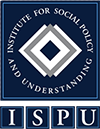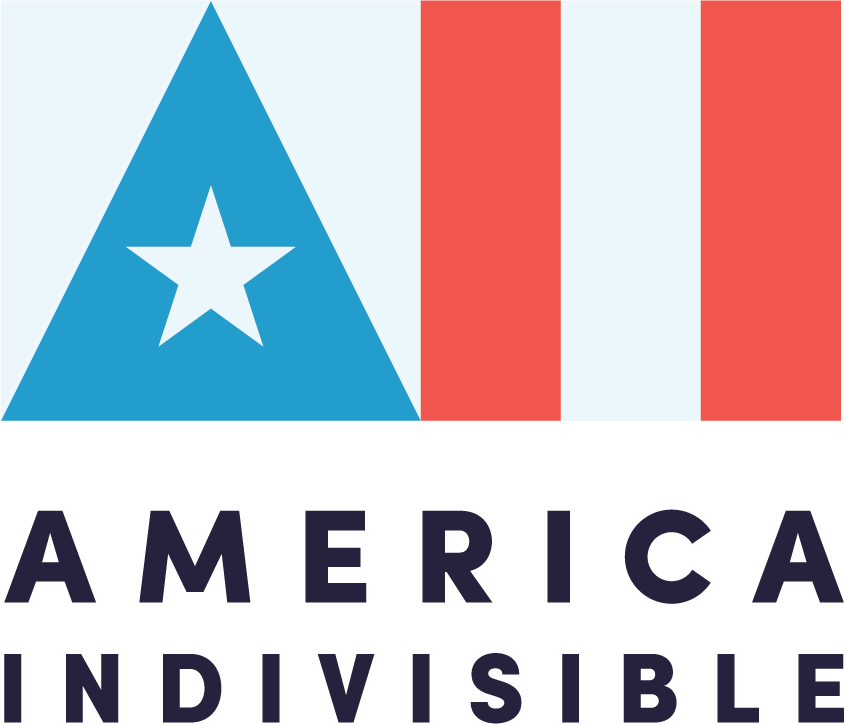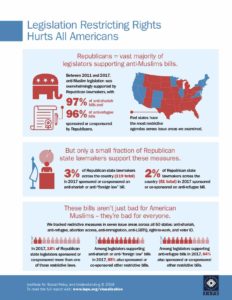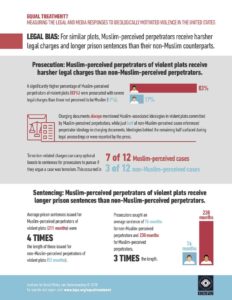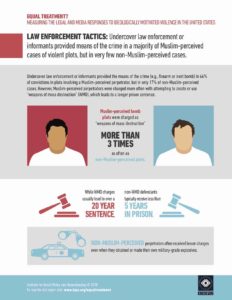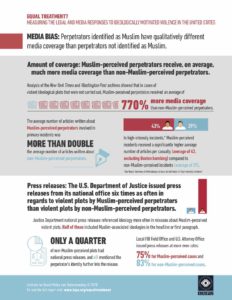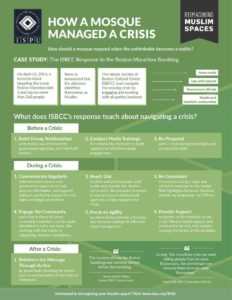.
.
Countering and Dismantling Islamophobia
A Comprehensive Guide for Individuals and Organizations
Countering and Dismantling Islamophobia
A Comprehensive Guide for Individuals and Organizations
.
.
What is Islamophobia?
Islamophobia manifests in many different anti-Muslim activities. Khaled Beydoun, a scholar of Islamophobia, identifies three types of Islamophobia: structural, individual, and dialectic.
Structural Islamophobia is reflected in institutionalized anti-Muslim legislation and further perpetuated through dialectical Islamophobia via policing, bias in media representation and in the legal system, and the use of anti-Muslim rhetoric and statements by political candidates and elected or appointed officials.
On a community level, the emergence of anti-Muslim hate groups, anti-Muslim rallies, organized and anti-mosque activity, including opposition to mosque construction or expansion, vandalism, and opposition to refugee resettlement, demonstrate Islamophobia.
At the private individual level, Islamophobia takes the form of harassment and violence. The 2018 FBI Hate Crime Statistics show an increase in violent “crimes against persons,” even as the vast majority of incidents go unreported. Overall, race and ethnic origin and religious bias accounted for over 78% of all single-bias incidents in 2018. As a religious minority, an ethnically diverse group (half of whom are immigrants), and with a third of the community living in poverty, American Muslims are at a unique demographic intersection that makes them vulnerable to hate crimes. Though FBI statistics show anti-Muslim hate crimes make up 15% of all religiously motivated incidents, tellingly, the Sikh community—often because they are perceived to be Muslim—saw hate crimes triple over 2017-2018.
Several studies have shown that most Americans do not personally know a Muslim, which allows the media and public figures to distort public opinion of Islam and Muslims.
This toolkit is a collection of resources and proven best practices to empower communities and individuals to effectively counter and dismantle Islamophobia in its various forms. As a living document, the toolkit may be updated from time to time with new resources.
Cover photo: The Ban is Immoral by ep_jhu via Flickr Creative Commons (CC BY-NC 2.0)
Why This Guide?
Who is this toolkit for?→
This document is a comprehensive resource for individuals and organizations alike. Laypeople such as concerned citizens, parents, neighbors, and members of religious congregations will find tools here that empower them to challenge Islamophobia in their homes, neighborhoods, and communities. Educators; political, civic, religious or business community leaders; civic organizations; and any entity looking for guidance to fight bigotry in their ranks, organization, or wider communities can follow actionable items in this guidebook to help them dismantle Islamophobia.
How to use this guide→
This toolkit is a resource for both short-term and long-term use. In times of crisis, this guide will serve as a reactive rapid response toolkit for immediate actions to address and stymie Islamophobia. At the same time, the information contained herein provides several proactive long-term opportunities to address systemic challenges through education and coalition-oriented ideas.
Download this guide→
If you’d prefer to download, print, and share a PDF of this toolkit, you can do that here.
Partner Organizations
This toolkit is a joint effort published by the Institute for Social Policy and Understanding, America Indivisible, Western States Center, and Shoulder to Shoulder. We would like to acknowledge our generous supporters whose contributions made this report possible, including DBEK Fund of the Common Counsel Foundation and Open Society Foundation.
.
Part 1: What is Structural Islamophobia?
Structural Islamophobia presumes that Islam is inherently violent, suggests that Muslims are incompatible with broader society, and embeds fear and suspicion of Muslims in national institutions. State actors including public officials and law enforcement agencies use the legal framework to enact policies that impact Muslim communities at the national, state, and local levels. As a social institution, the media plays its role in recreating and perpetuating stereotypes and prejudice, portraying Islam and Muslims as “others.”
Example 1: Anti-Muslim Legislation
Manifestation: Islamophobic Legislation
In the U.S., legislation such as the Patriot Act, the Countering Violent Extremism Program, and, more recently, the Executive Order 13769 that bans Muslims’ entry to the U.S. from several Muslim-majority countries, are all examples of state-sanctioned targeting of Muslims as a group. They cast Muslims as dangerous outsiders whose actions should be surveilled and their movements curtailed.
In fact, the U.S. has a long history of the legalized othering of Muslims. Research suggests that anti-Shariah laws and other legislation that targets Muslims often goes hand in hand with similar efforts to manufacture bigotry and create fear of minorities such as anti-immigration and voter-ID legislation. Such measures suppress participation from racial and economic minorities and also limit freedoms for all Americans.
Counteraction: Understand, Mobilize, Collaborate
- Understand and confront the anti-Shariah movement in the U.S.
- Study the religious freedoms enshrined within the American Constitution
- Learn the difference between Muslim concepts of state and religious laws
- Mobilize to support and protect American Muslims
- Examine restrictive legislative measures and collaborate with impacted groups
- Cultivate allyship through civic action
- Organize an interfaith show of solidarity in response to new anti-Muslim legislation or legislation that cultivates Islamophobia
- Read success stories of communities finding strength through diversity
.
Challenging Anti-Shariah Legislation
Case Study: The “Faith in Our State” Resolution in Washington State
Issue: In 2013, some Washington state legislators proposed a pair of anti-Shariah bills (HB1392/SB 6118). The Washington state chapter of the Council on American-Islamic Relations (CAIR-WA) sought to pass a symbolic counter-resolution to reaffirm Washington’s and America’s commitment to religious freedom. The resolution was titled “Faith in Our State.”
Actions
- Coalition formation: CAIR-WA reached out to several faith-based, immigrant rights, and civil liberties groups with whom it had existing and trusted relationships.
- Establish unity of purpose: Coalition members understood that collective efforts focused on getting the resolution passed in both legislative chambers in Washington was needed.
- Leveraging technical support: CAIR-WA sought allies’ help on an ad hoc basis, particularly in the technical area of lobbying individual law makers in the state capitol where CAIR-WA lacked capacity.
- Co-signing letter of support: the Washington State chapter of the ACLU, the Faith Action Network (FAN), OneAmerica, the Sikh Coalition, and the Jewish Greater Federation of Seattle co-signed CAIR-WA’s letter of support for the resolution.
- Strategic political alliances: CAIR-WA developed alliances with religious-minded Republican lawmakers to garner support for the religious freedom-based counter-resolution.
Best Practices
- An informal and agile coalition reduced the need for constant communication between partners once the purpose was well-defined.
- Finding common ground based on shared values with unlikely allies highlights the importance of meaningful engagement with opposition.
Results
- “Faith in Our State” resolution passed successfully.
- “Faith in Our State” is the first resolution of its kind to be passed in the country since the rise of anti-Shariah/anti-Islam initiatives in 2009.
- Tactically, this resolution turns the tables on anti-Muslim activists to “expend energy defeating [an] initiative rather than [Muslims] expending energy defeating theirs.
Case study excerpted from “Strength Through Diversity: Four Cases of Local and State Level Coalition Success” by Alejandro Beutel and Jelena Jankovic for ISPU, January 2015.
.
.
Example 2: Unequal Legal Treatment
Manifestation: Unequal Treatment in the Legal System
Research reveals that perceived Muslim perpetrators of violence are subject to more severe legal charges and up to three times the prison sentence as perpetrators not perceived to be Muslim.
Muslims are monitored under surveillance programs without suspicion or accusation of crime. Perceived Muslim perpetrators are also much more likely to be targeted for entrapment, such as undercover law enforcement operations providing them with weapons or fake explosives.
Counteraction: Challenge + Confront
- Challenge the narratives of “terrorists” and what constitutes “terrorism.”
- Understand ideologically motivated violence.
- Learn why “terrorism” is a problematic term.
- Confront bias in the criminal justice system.
- Spot double standards in framing of crime.
- Champion equal justice.
- Reject the creation of new domestic terrorism laws that would expand the government authorities and would cause further harm to marginalized communities, who are already targeted by existing domestic terrorism authorities.
- Learn about American Muslims’ rejection of violence against individuals.
Example 3: Bias in the Media
Manifestation: Media Bias
Even in the pre-9/11 era, American media demonstrated a strong anti-Muslim bent. Research consistently reveals that Muslims are among the most negatively portrayed minority groups in America.
Studies show that in media portrayals of Muslim women, negative stereotypes abound.
Perpetrators perceived as Muslim recieve more than seven times the media coverage compared to non-Muslim perpetrators for a similar crime.
Counteraction: Think Critically + Demand Truth
- Develop media literacy and learn about how media perpetuates Islamophobic views.
- Become familiar with the extent of prejudice in legal and media responses to ideologically motivated violence.
- Understand the facts about American Muslim women.
- Demand unbiased coverage from news outlets.
- As part of media, employ successful media approaches.
-
Example 4: Anti-Muslim Political Rhetoric
Manifestation: Elected Officials Using Anti-Muslim Rhetoric
News reports have documented elected officials openly exhibiting Islamophobic views.
There is growing evidence of widespread use of anti-Muslim rhetoric in 2017-2018 election races — a practice popular with politicians, but not voters, and ultimately a losing strategy.
Some research suggests a correlation between anti-Muslim rhetoric in the 2016 U.S. election cycle and an uptick in violent crime. Other organizations find recent violence to be the result of decades-long Islamophobic and xenophobic sentiments expressed by anti-Muslim groups and the media over time, as well as officials in the Trump administration of late.
Counteraction: Fight Fear with Facts
- Know your elected and campaigning officials’ stances and vote against officials espousing hate.
- Share facts over fear to counter bigotry and fear mongering.
- Lift your voice publicly against hate and in support of Muslims through op-eds, letters to the editors, and public support for freedom of religion.
- Encourage the implementation of anti-Islamophobia campaigns in your community.
- Learn about and connect with organizations that work towards strength through unity.
Example 5: Resisting Refugees
Manifestation: Resistance to Refugee Settlement
In 2015, then-candidate Donald Trump called for a ban on the entry of Muslims in the U.S. As part of the recent trend of structural Islamophobia reflected in Trump’s immigration policy, the number of refugees admitted to the U.S., particularly Muslims, has fallen to the lowest levels since the current refugee program was implemented in 1980.
Islamophobic and xenophobic rhetoric is divisive and politicizes refugees, asylum seekers, and migrants. There is evidence of elected officials advocating for the restriction of admittance of Syrian refugees to the U.S. following ideologically motivated attacks elsewhere in the world, showing bias towards an entire faith group due to the actions of a few. Research suggests that previously neutral communities are provoked to oppose refugee resettlement on the basis of partisanship.
Counteraction: Welcome and Support Refugees
- Dispel falsehoods surrounding immigration and crime.
- Understand the economic contributions of refugees and immigrants.
- Learn how refugees support and enrich American cities.
- Advocate to welcome refugees in your locality, state, and country.
- Welcome refugees as valuable new members of American society.
- Show community support for refugees.
Fighting Structural Islamophobia
Case Study: Communities United for New York City Police Department Reform: “Stop and Frisk” and Muslim Surveillance Operations
Issue: “Stop, Question and Frisk,” a crime control tactic of the NYPD used to temporarily detain, question, and search pedestrians if an officer has reasonable suspicion that the pedestrian in question has “committed, is committing, or is about to commit a felony or a Penal Law misdemeanor.” Research found that Black and Latino people were disproportionately and overwhelmingly targeted and were substantially more likely than white people to be frisked and to have physical force used against them. In addition to concerns over civil rights and civil liberties, data suggests the program is ineffective in the short-term and in the long-term, possibly counterproductive to controlling crime.
In 2011, a series of investigative reports revealed secret widespread NYPD surveillance of Muslims. Rather than conducting targeted, evidence-led investigations of specific criminal activity, the research found “police subjected entire neighborhoods to surveillance and scrutiny, often because of the ethnicity of the residents, not because of any accusations of crimes. Hundreds of mosques and Muslim student groups were investigated and dozens were infiltrated.”
Actions
- Bridge-building: form coaltions through solidarity events to bring together Muslim and non-Muslim groups.
- Streamlined and coordinated reform efforts: Align reform agendas across various groups, alliances between grassroots groups and City Council lawmakers.
Best Practices
- Formal leadership and well-established division of labor across partners ensure clarity.
- Diverse set of capabilities and funding amongst collaborators: the effort utilized strengths of each member’s unique skills —- technical, legal, organizational, and financial.
- Deploy multiple tactics and strategies such as lawsuits, community organization, advocacy, awareness campaign, demonstrations, and press conferences.
Results
- All four proposed Community Safety Act (CSA) bills were passed.
- American Muslims achieved strategic successes through the organization, mobilization, and inclusion of American Muslims in effective coalition advocacy work.
- Officials reported the disbanding of the specific unit conducting unchecked surveillance on Muslim communities (though surveillance is ongoing).
.
Private Islamophobia is the fear, suspicion, and violent targeting of Muslims by private actors — individuals or institutions acting independently of the state. Islamophobia scholar Khaled Beydoun argues that policies, rhetoric, and media representations of Muslims enable and embolden private Islamophobia to unprecedented levels.
Example 6: Hate Gatherings
Manifestation: Hate Groups + Hate Rallies
Though relatively new, anti-Muslim hate groups have gained traction in recent years. Research has exposed a well-funded and organized Islamophobia network spurring and fueling anti-Muslim activity in various spheres. Organizations such as ACT for America and Understanding the Threat hold anti-Muslim rallies and talks across the U.S.
Counteraction: Spread Love + Cultivate Peace
- Understand the depth and breadth of the Islamophobia industry and how to diminish its strength.
- Inspire your community to fight hate with love.
- Be a civic neighbor and engage meaningfully with your Muslim community.
- Take collaborative action to abort or counter hate-based events.
- Push for local resolutions to create a community inhospitable to hate.
- Exert public pressure to diminish the efficacy of Islamophobic events.
.
Issue: John Guandolo, an anti-Muslim ex-FBI agent is a self-appointed counter-terrorism expert. He offers Islamophobic training courses to law enforcement and civilians across the U.S. under his organization Understanding The Threat (UTT). Harboring aggressive far-right views, Guandolo advocates for American Muslims to be deprived of their First Amendment rights and alleges that they are anti-American and hold ties to “terrorist organizations” overseas. In April of 2018, Guandolo scheduled a speaking tour of five midwestern cities. Each event was held at a hotel.
Actions
- Coalition-building: an alliance was formed with local community groups and civil rights organizations to plan a collaborative effort.
- Public awareness: online channels were used to educate local communities about the events taking place and their damaging consequences
- Call-in campaign: collective action planners encouraged en masse phone calls to hotels and tour venues to cancel events.
- Counter-rally: Organizers planned a counter-rally opposite a hotel scheduled to host one of the tour events.
Best Practices
- Focus on local relationships: In one instance, callers emphasized that the anti-Muslim event would create lasting damage and drive away business as the hotel was a popular wedding venue for the local American Muslim community.
Results
- Four of the five events were cancelled by hotels who refused to host the gathering.
- All four hotels cited public calls against bigotry as the reason for cancellation.
- One hotel cited the counter rally and negative publicity as the reason for refusing to host the event.
.
.
Example 7: Communities Opposing Mosques
Manifestation: Mosque Opposition
Efforts to construct new mosques or expand existing Islamic centers have been met with hostility for many years. Opposition to the so-called Ground Zero mosque has been widely documented. In its shadow, several smaller mosques have also suffered a similar fate.
Masked as environmental or traffic concerns, resistance to mosques often carries a distinct “us vs. them” undertone nonetheless. At times, the city meetings held to address zoning and permit issues are targeted by Islamophobes.
Counteraction: Plan + Prepare
- Familiarize yourself with common challenges to mosque construction and ways to manage them.
- Pre-empt opposition and strategize effectively to secure municipal approvals for building mosques.
- Mobilize community support prior to publicizing new plans.
- Nurture strong interfaith coalitions.
- Be an upstanding neighbor in faith.
- Develop robust relationships with neighbors and allies that last long after initial hurdles have been overcome.
.
Being an Upstanding Member in Faith
Case Study: Heartsong Church and Memphis Islamic Center
Issue: In 2014, the Memphis Islamic Center purchased a large parcel of land in Cordova, an area known for its density of churches deep in the Bible Belt. Pastor Steve Stone of Heartsong Church realized that his congregation would be the closest neighbors to the proposed mosque. He was confronted with balancing misgivings about having an Islamic center nearby with leading his congregation through this situation as a person of faith.
Actions
- Gesture of warmth: Pastor Stone decided to be an upstander and show friendship to his new Muslim neighbors with a welcome sign.
- Faith-based counseling through uncertainty: Through scripture, Pastor Stone helped members of his church navigate the trepidation they felt at their pastor’s support for Muslims.
- Tangible help: When the Islamic center construction fell behind schedule, Heartsong Church offered their building to the Muslim community for prayers during Ramadan.
Results
- The fear of being unwelcomed among the Muslim leadership and congregation dissipated immediately upon witnessing the outward sign of support by Heartsong Church.
- A lasting warm relationship between the leaders of the two religious organizations developed.
- Authentic connection between the members of the two houses of worship grew, built on friendship, trust, and community service.
.
.
Example 8: Anti-Mosque Activity
Manifestation: Mosque Vandalism
There have been well- documented and widespread instances of mosque vandalism across the U.S. In recent years, anti-mosque activity has increased. Instances of arson, hateful graffiti, and break-ins are common forms of vandalism.
Counteraction: Show Solidarity
- Organize a community show of support.
- Host interfaith efforts to rally around Muslim community.
- Involve and include elected officials in public displays of solidarity.
.
Issue: In September 2015, the Islamic Center of Louisville, Kentucky, was vandalized with threatening graffiti in apparent response to antisemitic attacks in France.
Actions
- Unified response: The Mayor and local civic and faith leaders called a press conference to denounce the hateful vandalism.
- Organization of designated “clean up” day: Interfaith leaders and Mayor Fischer called on the community to help paint over the graffiti at a designated time.
Best Practices
- Longstanding interfaith relationships ensured strong support and turnout in the Muslim community’s time of need.
Results
- Locals donated paint and supplies for the clean up effort.
- Nearly 1,000 community members attended the clean-up day to paint over the graffiti.
- Representatives from all major faith congregations showed support in person.
- City authorities pitched in for parking management and neighbors opened parking areas to enable attendees.
.
.
Example 9: Assaults and Harassment
Manifestation: Harassment + Violence
In the years since the events of 9/11, assaults against Muslims have soared. In the past, some incidents of anti-Muslim harassment have turned deadly. In addition to individual occurrences, Muslim worshippers are also intimidated outside their mosques.
There is a deep psychological impact of living under the threat of violence stemming from Islamophobia, even as many American Muslim communities emerge from setbacks stronger than before. In particular, the results of the 2016 election have made Muslims and Jews vulnerable to fear and anxiety, with an added burden of suffering on Muslim women. Alarmingly, even American Muslim children face faith-based bullying at schools from educators and peers.
Counteraction: Know + Protect Your Muslim Neighbor
- Learn how to reach out to and connect with Muslim neighbors.
- Educate yourself and your community about American Muslims and their diversity.
- Challenge Islamophobia in your circle.
- Fight religion-based bullying at schools.
- Join community initiatives to express love in the face of adversity.
- If possible, intervene if you see anti-Muslim harassment.
.
In order to respond to and dismantle Islamophobia effectively, narratives about Islam and Muslims must be widened and inclusive. It is important to understand that all Muslims are not “newcomers” to the U.S., and that anti-Muslim sentiment goes far beyond the security lens and women’s rights.
Checklist
- Learn about structural Islamophobia, such as Islamophobic legislation, unfair treatment in the legal system, media bias, anti-Muslim political rhetoric, and resistance to refugee resettlement and private Islamophobia including hate group activities, mosque opposition, mosque vandalism, harassment, and violence.
- Educate yourself and others about Islam and Muslims using authentic sources and learn about the anti-shariah movement, ideologically motivated violence, facts about immigration and crime, media double standards, the Islamophobia industry, and challenges to mosques.
- Speak up against injustice, biased media coverage, unfair legislation, hate speech, mosque vandalism, harassment and in favor of minorities, immigrants, refugees, and civil and human rights.
- Organize by mobilizing neighbors and communities, collaborating across civic groups, cultivating interfaith allies, and holding public displays of solidarity.
- Center the voices of Muslims — men and women — and give them space to speak for themselves.
- Learn how to be a good ally from American Muslim and Arab American leaders.
- Do your own research and do not ask marginalized communities to shoulder the burden of educating others.
- Avoid common mistakes made by interfaith allies.
- Help American Muslim women fight Islamophobia, not Islam.
- Steer clear of performative allyship.
- Study success stories of collaborative efforts to fight Islamophobia.
.
Azka Mahmood
Report Author
Petra Alsoofy
Outreach and Partnerships Manager, ISPU
Lida Azim
Program Manager, America Indivisible
Nina Fernando
Program Director, Shoulder to Shoulder
Erum Ikramullah
Research Project Manager, ISPU
Dr. Catherine Orsborne
Executive Director, Shoulder to Shoulder
Lindsay Schubiner
Momentum Program Director, Western States Center
Meira Neggaz
Executive Director, ISPU
Dalia Mogahed
Director of Research, ISPU
Katherine Coplen
Director of Communications, ISPU
Partner Organizations
This toolkit is a joint effort published by the Institute for Social Policy and Understanding, America Indivisible, Western States Center, and Shoulder to Shoulder.
Institute for Social Policy and Understanding (ISPU) provides objective research and education about American Muslims to support well-informed dialogue and decision-making. Our research aims to educate the general public and enable community change agents, the media, and policymakers to make evidence-based decisions.
America Indivisible is a non-partisan, non-profit coalition effort to address rising bigotry against members of Muslim communities and those who appear to be Muslim from Black, Arab, Sikh, and South Asian American communities by reinforcing the American values of equality, pluralism, and strength through diversity.
Shoulder to Shoulder is a national coalition-based campaign of religious denominations and faith-based organizations and communities that are committed to ending discrimination and violence against Muslims in the United States by equipping, connecting, and mobilizing faith leaders to effectively take action.
Introduction Sources
Bridge Initiative. What Is Islamophobia? Accessed August 2020.
New America Initiative. Anti-Muslim Activities in the United States 2012-2018. Accessed August 2020.
Beydoun, Khaled A, “Islamophobia: Toward a Legal Definition and Framework.” Columbia Law Review, March 16, 2017.
Southern Poverty Law Center, Tracking Anti-Muslim Legislation Across the US, Accessed August 2020.
Rao, Kumar and Shenkman, Carey, Equal Treatment? Measuring the Legal and Media Responses to Ideologically Motivated Violence, Institute for Social Policy and Understanding, 2018.
Aziza, Sarah. “The 2018 Midterm Cycle Could Be the Most Islamophobic U.S. Election Ever,” The Intercept, October 22, 2018.
Allam, Hannah and Talal Ansari, “Republican Officials Have Been Bashing Muslims. We Counted.” Buzzfeed, April 10, 2018.
Southern Poverty Law Center. Anti-Muslim Hate Groups. Accessed August 2020.
American Civil Liberties Union. Nationwide Anti-Mosque Activity. Accessed August 2020.
Rose, Joel. “Opposition To Refugee Arrivals Keeps Getting Louder.” NPR, November 22, 2017.
Federal Bureau of Investigations (FBI). FBI 2018 Hate Crime Statistics. Accessed August 2020.
Treisman, Rachel. “FBI Reports Dip In Hate Crimes, But Rise In Violence.” NPR, November 12, 2019.
Bureau of Justice Statistics (BJS). Hate Crime Victimization, 2004-2015 Press Release. Accessed August 2020.
Federal Bureau of Investigations (FBI). FBI 2019 Hate Crime Statistics. Accessed August 2020.
Federal Bureau of Investigations (FBI). FBI 2018 Incidents and Offenses. Accessed August 2020.
Mogahed, Dalia, and Youssef Chouhoud. American Muslim Poll 2018: Pride and Prejudice. Institute for Social Policy and Understanding, 2018.
Mogahed, Dalia, and Youssef Chouhoud. American Muslim Poll 2017: Muslims at the Crossroads. Institute for Social Policy and Understanding, 2017.
Mogahed, Dalia, and Azka Mahmood. American Muslim Poll 2019: Predicting and Preventing Islamophobia. Institute for Social Policy and Understanding, 2019.
Kim, Victoria and Joseph Serna. For Sikhs, often mistaken as Muslims, it’s ‘a hostile time, a scary time.’” Los Angeles Times, December 29, 2015.
Sikh Coalition, “After 200 Percent Increase in Anti-Sikh Hate Crimes Reported by FBI, Sikh Coalition Calls for Action.” November 12, 2019.
America Indivisible. “The Science Behind Neighborliness.” Accessed August 2020.
Part 1 Sources
Bakali, Naved. “Islamophobia and the Law: Unpacking Structural Islamophobia.” Yaqeen Institute, November 14, 2019.
Beydoun, Khaled A. American Islamophobia. May 2019.
Office of the Director of National Intelligence. USA Patriot Act. Accessed August 2020.
Department of Homeland Security. “What is CVE?” Accessed August 2020.
White House. “Executive Order 13780: Protecting the Nation From Foreign Terrorist Entry Into the United States.” Accessed August 2020.
Elsheikh, Elsadig, Natalia Ramirez Lee and Basima Sisemore. Legalizing Othering: The United States of Islamophobia. Haas Institute for a Fair and Inclusive Society, September 2017.
Southern Poverty Law Center, Tracking Anti-Muslim Legislation Across the US, Accessed August 2020.
Beutel, Alejandro and Saeed Khan. Manufacturing Bigotry: A State-By-State Legislative Effort to Pushback against 2050 by Targeting Muslims and Other Minorities. Institute for Social Policy and Understanding, November 10, 2014.
Shoulder to Shoulder Campaign. “A Guide to Understanding and Confronting the anti-Sharia Movement in the United States.” September 20, 2018.
Interfaith Alliance. American Muslims and Religious Freedom FAQ. Accessed August 2020.
Quraishi-Landes, Asifa. “How Anti-Shariah Marches Mistake Muslim Concepts of State and Religious Law.” Institute for Social Policy and Understanding, June 8, 2017.
Shoulder to Shoulder Campaign. Toolkit for Mobilizing to Support American Muslims. March 21, 2017.
Institute for Social Policy and Understanding. Islamophobia 2050 Restrictive Measures Map. Accessed August 2020.
American Indivisible and Shoulder to Shoulder Campaign. An American’s Digital Guide to Allyship Through Civic Action. November 2019.
Porter, Jane. “In Raleigh, faith leaders pledge solidarity with U.S. Muslim community.” Indy Week, December 12, 2015.
Beutel, Alejandro J. and Jelena Jankovic. Strength Through Diversity: Four Cases of Local and State Level Coalition Success. Institute for Social Policy and Understanding, January 2015.
Institute for Social Policy and Understanding. Legislation Restricting Rights Hurts All Americans. 2018.
Rao, Kumar and Shenkman, Carey, Equal Treatment? Measuring the Legal and Media Responses to Ideologically Motivated Violence, Institute for Social Policy and Understanding, 2018.
Institute for Social Policy and Understanding. “Equal Treatment? Measuring the Legal and Media Responses to Ideologically Motivated Violence: Law Enforcement Tactics.” September 2018.
American Civil Liberties Union. “Factsheet: The NYPD Muslim Surveillance Program.” Accessed August 2020.
Human Rights Watch. Illusion of Justice: Human Rights Abuses in US Terrorism Prosecutions. July 21, 2014.
Corbin, Caroline Mala. Terrorists Are Always Muslim but Never White: At the Intersection of Critical Race Theory and Propaganda. Fordham Law Review, 2017.
Ben Lazreg, Houssem. “The debate over what constitutes terrorism.” The Conversation, November 14, 2017.
Aaronson, Trevor. “Terrorism’s Double Standard: Violent Far-Right Extremists are Rarely Prosecuted as Terrorists.” The Intercept, March 23, 2019.
Zerkel, Mary. “Why we should rethink calling white supremacist violence ‘terrorism.’” American Friends Service Committee, January 14, 2021.
American Bar Association. “How to confront bias in the criminal justice system.” December 2019.
Lari, Waliya. “Seven ways to avoid double standard reporting on extremist violence (Report).” Asian American Journalists Association, 2018.
German, Michael and Sara Robinson. “Wrong Priorities on Fighting Terrorism.” Brennan Center for Justice, 2019.
Mogahed, Dalia, and Youssef Chouhoud. American Muslim Poll 2018: Pride and Prejudice. Institute for Social Policy and Understanding, 2018.
Pew Research Center. “Terrorism and Concerns About Extremism: Muslims say killing civilians for political, social or religious reasons is not justifiable.” July 24, 2017.
Institute for Social Policy and Understanding. “Equal Treatment? Measuring the Legal and Media Responses to Ideologically Motivated Violence: Legal Bias.” September 2018.
Abusalim, Dorgham. “Study: ‘NYT’ portrays Islam more negatively than alcohol, cancer, and cocaine.” Mondoweiss, March 5, 2016.
Iftikhar, Arsalan. “Report: Muslims Most Negatively Portrayed Minority in US Media.” Bridge Initiative, September 18, 2019.
Terman, Rochelle. “The news media offer slanted coverage of Muslim countries’ treatment of women.” Washington Post, May 5, 2017.
Rao, Kumar and Shenkman, Carey, Equal Treatment? Measuring the Legal and Media Responses to Ideologically Motivated Violence, Institute for Social Policy and Understanding, 2018.
Othering & Belonging Institute. “Islamophobia: Mainstream and Digital Media.” Accessed August 2020.
Institute for Social Policy and Understanding. “Equal Treatment? Measuring the Legal and Media Responses to Ideologically Motivated Violence: Media Bias.” September 2018.
Institute for Social Policy and Understanding, Journalists Toolkit. Accessed August 2020.
Lari, Waliya. “Seven ways to avoid double standard reporting on extremist violence (Report).” Asian American Journalists Association, 2018.
Institute for Social Policy and Understanding. “Equal Treatment? Measuring the Legal and Media Responses to Ideologically Motivated Violence: Media Bias.” September 2018.
Allam, Hannah and Talal Ansari, “Republican Officials Have Been Bashing Muslims. We Counted.” Buzzfeed, April 10, 2018.
Kudisch, Brianna. “School board member who made anti-Muslim Facebook posts refuses to apologize, resign.” NJ.com, July 25, 2019.
Bever, Lindsey. “A Texas council member advocated for banning Islam in schools. He refuses to resign.” Washington Post, February 19, 2018.
Muslim Advocates. Running on Hate: 2018 Pre-Election Report. 2018
Mogahed, Dalia, and Azka Mahmood. American Muslim Poll 2019: Predicting and Preventing Islamophobia. Institute for Social Policy and Understanding, 2019.
Mogahed, Dalia. “Congress and candidates, take note: Anti-Muslim sentiments are unpopular.” The Hill, September 19, 2019.
Müller, Karsten and Carlo Schwarz. From Hashtag to Hate Crime: Twitter and Anti-Minority Sentiment. SSRN, July 24, 2020.
South Asian Americans Leading Together (SAALT). Communities on Fire: Confronting Hate Violence and Xenophobic Politica Rhetoric. 2018.
Zurcher, Anthony, “What Trump team has said about Islam.” BBC, February 7, 2017.
Facts Over Fear. Standing With American Muslims. Accessed August 2020.
Shoulder to Shoulder Campaign. “Tactics for lifting your voice publicly.” March 16, 2017.
Domonoske, Camila. “Boston Launches Anti-Islamophobia Poster Campaign.” NPR, July 18, 2017.
Bridge Initiative. Organizations addressing Islamophobia Factsheet. Accessed August 2020.
Shabad, Rebecca, “Donald Trump calls for ‘total and complete shutdown’ of Muslims entering the US.” CBS News, December 7, 2015.
Connor, Phillip and Jens Manuel Krogstad. “Muslim refugees admitted to US down sharply in fiscal 2018.” Pew Research Center, May 3, 2018.
Misra, Tanvi. “How Trump’s Caravan Rhetoric Weaponizes Migrants.” Bloomberg CityLab, November 2, 2018.
CBS News. “More states say no to Syrian refugees after Paris attacks,” November 16, 2015.
Nagel, Caroline. “Southern Hospitality?: Islamophobia and the Politicization of Refugees in South Carolina during the 2016 Election Season.” University of North Carolina Press, Fall 2016.
Misra, Tanvi. “For the Last Time, Here’s the Real Link Between Immigration and Crime.” Bloomberg CityLab, February 6, 2019.
Misra, Tanvi. “Crime Falls In Cities With Big Refugee Populations.” Bloomberg CityLab, February 14, 2017.
National Immigration Forum, “Immigrants as Economic Contributors: Refugees Are a Fiscal Success Story for America.” June 14, 2018.
Quirk, Vanessa. “Refugees Could ‘Save’ America’s Legacy Cities—Will We Let Them?” Metropolis, October 27, 2016.
Refugee Council USA. “2017 Toolkit: Visits with Local, State, and National Leaders to Welcome Refugees.” April 5, 2017.
International Rescue Committee. “How to help refugees in the United States: 12 ways to stand for welcome.” March 12, 2020.
Sneve, Joe “Refugees flood council meeting urging Sioux Falls to continue accepting new arrivals.” Argus Leader, January 14, 2020.
Part 2 Sources
Beydoun, Khaled A. “Rethinking Islamophobia.” Al Jazeera, March 12, 2018.
Democracy Now. “State-Sponsored Islamophobia & Trump’s Anti-Immigrant Rhetoric Embolden Right-Wing Terrorists.” March 18, 2019.
Southern Poverty Law Center. Anti-Muslim Hate Groups. Accessed August 2020.
Duss, Matthew,, Ken Gude, Ken Sofer and Yasmine Taeb. “Fear, Inc. 2.0.: The Islamophobia Network’s Efforts to Manufacture Hate in America.” Center for American Progress, February 11, 2015.
Fadel, Leila. “Charitable Foundations Are Funneling Millions To Anti-Muslim Groups.” NPR, May 7, 2019.
Carter Center. Countering the Islamophobia Industry. May 2018.
Anti-Muslim Marches Try Spreading Fear, Inspire Countless Acts Of Love Instead
Kuruvilla, Carol. “Sorry, Islamophobes: Your Anti-Muslim Rallies Ended Up Inspiring Acts Of Love And Service.” Huffington Post, October 11, 2015.
America Indivisible. An American’s Guide to Being a Civic Neighbor. September 2018.
Fight Back News. “Marxists and Muslims” shut down racist speaker tour. April 9, 2018.
Milwaukee Independent. Resolution denouncing Islamophobia introduced by State lawmakers.” February 1, 2017.
McCullough, Jolie. “In reversal, Texas agency says ex-FBI agent who called Islam “barbaric and evil” can’t train law enforcement.” Texas Tribune, May 16, 2018.
AFL-CIO. “North American Unions Together Against Islamophobia Stand in Solidarity with Immigrants, Refugees and Muslim Communities.” February 9, 2017.
American Friends Service Committee. “We stand in solidarity with Muslims against hate marches.” June 9, 2017.
Ahmad, Fatema. “How North Carolinians united against Islamophobia.” American Friends Service Committee, July 10, 2017.
Heidelberger, Cory Allen. “Video: Good Patriots Preach Love in Aberdeen.” Dakota Free Press, April 7, 2017.
Southern Poverty Law Center (SPLC). “John Guandolo’s tour collapses and longtime partner Chris Gaubatz quits.” April 12, 2018.
Pew Research Center. “Controversies Over Mosques and Islamic Centers Across the US.” September 27, 2012.
Elliott, Justin. “How the ‘ground zero mosque’ fear mongering began.” Salon, August 16, 2010.
Goodstein, Laurie. “Battles Around Nation Over Proposed Mosques.” New York Times, August 7, 2010.
Leventis Lourgos, Angie. “Opposition to suburban mosque predictable and sad, Muslims say,” Chicago Tribune, February 23, 2016.
Katz, Matt. “Another Mosque, This One in Bayonne, NJ, Faces Opposition From Neighbors.” WNYC News, January 23, 2017
Wootson, Jr., Cleve R. Georgia officials were set to approve a new mosque — until an armed militia threatened to protest.” Washington Post, September 14, 2016.
Foley, Kathleen. Not In Our Neighborhood: Managing Opposition to Mosque Construction, Institute for Social Policy and Understanding, October 1, 2010.
Foley, Kathleen. Building Mosques in America: Strategies for Securing Municipal Approvals. Institute for Social Policy and Understanding, October 1, 2010.
Prather, Shannon. “Muslims Mobilize to Build Mosques, Schools in Suburbs.” Star Tribune, October 10, 2015.
Becket Law. “Christians, Jews, Sikhs, Hindus defend New Jersey mosque Muslim congregation seeks right to assemble amidst local opposition.” May 11, 2016.
Chandrasekaran, Rajiv and Howard Schultz. “Upstanders: The Mosque Across the Street.” Starbucks Stories + News, September 14, 2016.
Institute for Social Policy and Understanding. “How a Mosque Managed a Crisis.” March 2018.
Younes, Llya. “Here Are the Hate Incidents Against Mosques and Islamic Centers Since 2013.” Propublica, August 17, 2017.
American Civil Liberties Union. Nationwide Anti-Mosque Activity. Accessed August 2020.
MacCormack, John. “Man accused of setting Victoria mosque fire found guilty.” Chron, July 16, 2018.
Van, Catherine. “Vandals spray-paint ‘ISIS’ over Northeast Portland mosque.” KATU News, September 12, 2017.
Associated Press. “Police Treating Mosque Break-In as Possible Hate Crime.” December 22, 2019.
Hammons, Adam. “Community comes together to support vandalized mosque.” Fox26 News, September 21.
DeGennaro, Nancy. “Murfreesboro mosque vandalism: Residents rally around Muslim community.” Daily News Journal, July 11, 2017.
Niedringhaus, Cassa. Community rallies behind Islamic Center after vandalism.” Coloradoan, March 26, 2017.
Blumberg, Antonia. “Hundreds Gather At Louisville Mosque To Paint Over Hateful Graffiti.” Huffington Post, September 18, 2015.
Kishi, Katayoun. Assaults against Muslims in US surpass 2001 levels. Pew Research Center, November 15, 2017.
Fortin, Jacey and Matthew Haag. Two Killed in Portland While Trying to Stop Anti-Muslim Rant, Police Say.” New York Times, May 27, 2017.
Wyloge, Evan. “Hundreds gather in Arizona for armed anti-Muslim protest.” Washington Post, May 30, 2015.
Herzig, Ben. “American Muslims in the Age of Trump: The View from the Therapy Couch.” Institute for Social Policy and Understanding, January 8, 2017.
Mogahed, Dalia, and Youssef Chouhoud. American Muslim Poll 2017: Muslims at the Crossroads. Institute for Social Policy and Understanding, 2017.
Mogahed, Dalia, and Youssef Chouhoud. American Muslim Poll 2018: Pride and Prejudice. Institute for Social Policy and Understanding, 2018.
Curry, Colleen and Jana Sepehr. “Posters Show What to Do if You See a Muslim Person Being Harassed.” Global Citizen, August 2, 2017.
Shoulder to Shoulder Campaign. “I want to reach out to my Muslim neighbor. How do I get started?” February 16, 2017.
Mogahed, Dalia, and Erum Ikramullah. American Muslim Poll 2020: Amid Pandemic and Protest. Institute for Social Policy and Understanding, 2020.
Institute for Social Policy and Understanding. Muslims for American Progress, 2018.
Zerkel, Mary. “Your dinner guest makes an Islamophobic comment. How do you respond?” American Friends Service Committee, May 15, 2019.
Institute for Social Policy and Understanding. Educators Toolkit. Accessed August 2020.
Curry, Colleen. Portland Has a Message for Muslim Girls in Hijabs After Deadly Hate Crime Attack.” Global Citizen, June 1, 2017.
Part 3 Sources
History Detectives. Islam In America. Access August 2020.
Institute for Social Policy and Understanding. Journalist Toolkit. Accessed August 2020.
Institute for Social Policy and Understanding. American Muslim Poll 2017: Muslims at the Crossroads: Muslim Women Suffer Most, Defy Stereotypes. August 2017.
Esposito, John and Dalia Mogahed. Who Speaks for Islam? What a Billion Muslims Really Think
ISPU | Muslim Women Speak for Themselves. 2008.
Multnomah County. “How to be an ally: advice from Muslim and Arab American community leaders.” June 14, 2017.
Morgan, Elan. 21 Reasons Why It Is Not My Responsibility As a Marginalized Individual to Educate You About My Experience. Medium, August 30, 2014.
Corea, Nicole. Want to Be an Ally for People of Different Faiths? Here’s What Not to Do.” Aspen Institute, February 16, 2018.
Beutel, Alejandro J. and Jelena Jankovic. Strength Through Diversity: Four Cases of Local and State Level Coalition Success. Institute for Social Policy and Understanding, January 2015.


